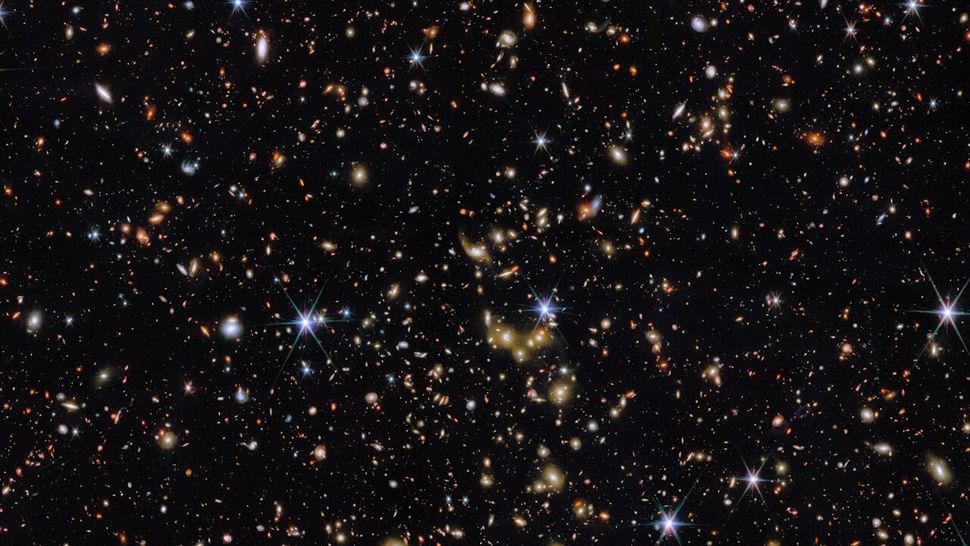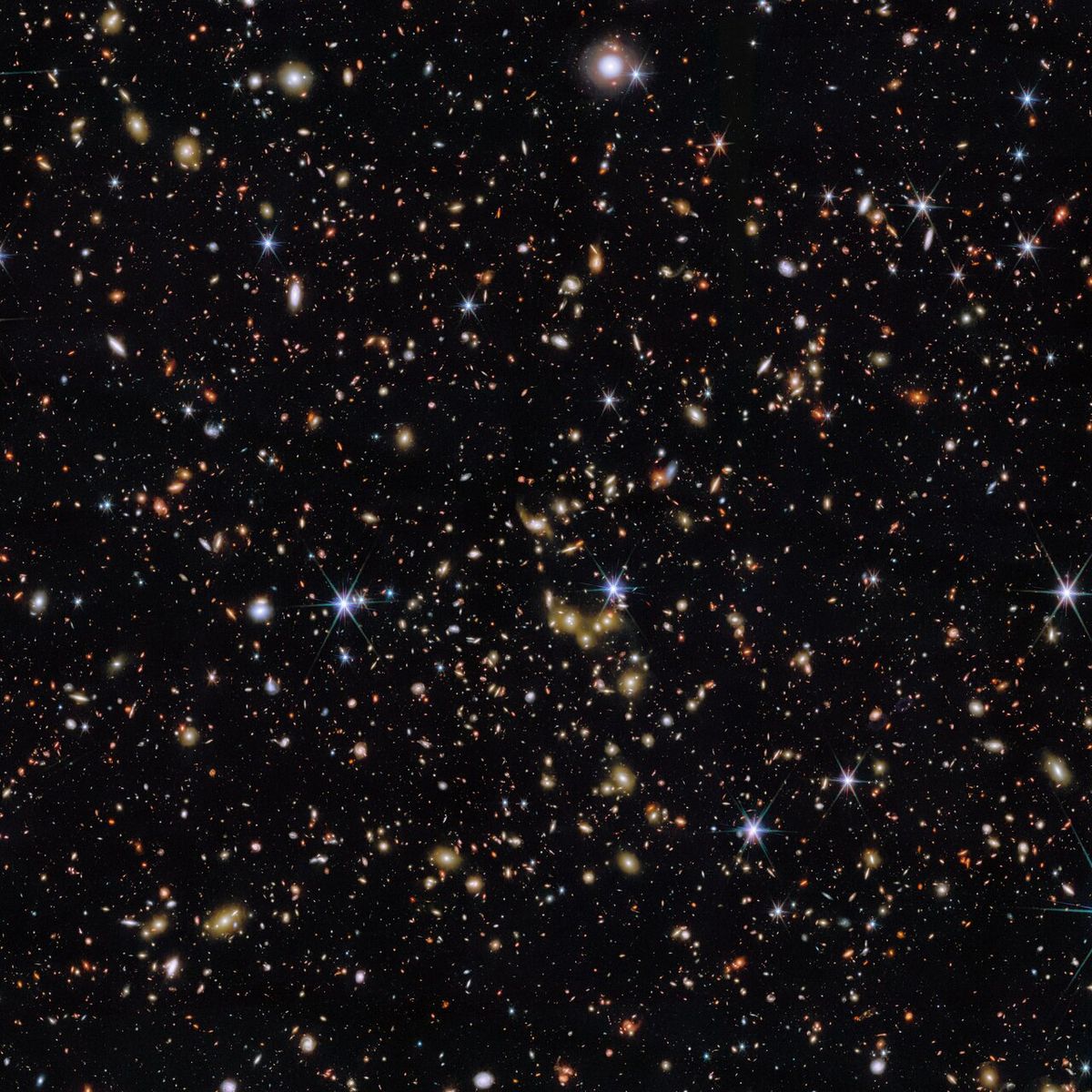Science
Related: About this forumSpace photo of the week: Record-breaking James Webb telescope image captures 1,678 galaxy groups at once
By Jamie Carter
published 3 hours ago
Astronomers used the James Webb Space Telescope for the largest and deepest sample of galaxy groups, some of which were up to 12 billion light-years away.

The Webb Telescope's latest image features galaxies that are billions of light-years distant. (Image credit: ESA/Webb, NASA & CSA, G. Gozaliasl, A. Koekemoer, M. Franco, and the COSMOS-Web team)
What it is: Thousands of galaxy groups from the early universe
Where it is: 12 billion light-years away in the constellation Sextans
When it was shared: April 29, 2025
Why it's so special: Sitting across a part of the night sky that looks away from the Milky Way and into the distant universe, the constellation Leo, the lion, is known to astronomers as the realm of the galaxies. But when the James Webb Space Telescope (JWST) peered next to the lion, it revealed astounding new details. In the tiny constellation Sextans, JWST detected groups of galaxies up to 12 billion light-years away. The universe is 13.8 billion years old, so these galaxies date back to the universe's early years.
Just as gravity causes moons to orbit planets, planets to orbit stars and stars to orbit the centers of their galaxies, galaxies themselves orbit each other to create gravitationally bound groups, according to NASA. This largest-ever sample of 1,678 galaxy groups is helping astronomers figure out what the early universe was like and how it has changed over the past 12 billion years.
Galaxies that existed in the early universe had irregular shapes and formed lots of stars, while galaxies that formed later appear more symmetrical and structured, with elliptical and spiral galaxies — like our Milky Way.

An uncropped version of the image. (Image credit: ESA/Webb, NASA & CSA, G. Gozaliasl, A. Koekemoer, M. Franco, and the COSMOS-Web team)
"Like humans, galaxies come together and make families,” Ghassem Gozaliasl, a researcher in astronomy at Aalto University, head of the galaxy groups detection team and lead author of a study on the findings accepted for publication in the journal Astronomy and Astrophysics, said in a statement. "Groups and clusters are really important because within them galaxies can interact and merge together, resulting in the transformation of galaxy structure and morphology.” In these galaxies, astronomers can also study dark matter, supermassive black holes and the gas between galaxies.
More:
https://www.livescience.com/space/astronomy/space-photo-of-the-week-record-breaking-james-webb-telescope-image-captures-1-678-galaxy-groups-at-once
SheltieLover
(68,083 posts)Ty for sharing.
Firestorm49
(4,371 posts)time frame for the “origin of the universe.” But the photos! Mind boggling.
NCDem47
(2,818 posts)The scope and scale...just mind-boggling.